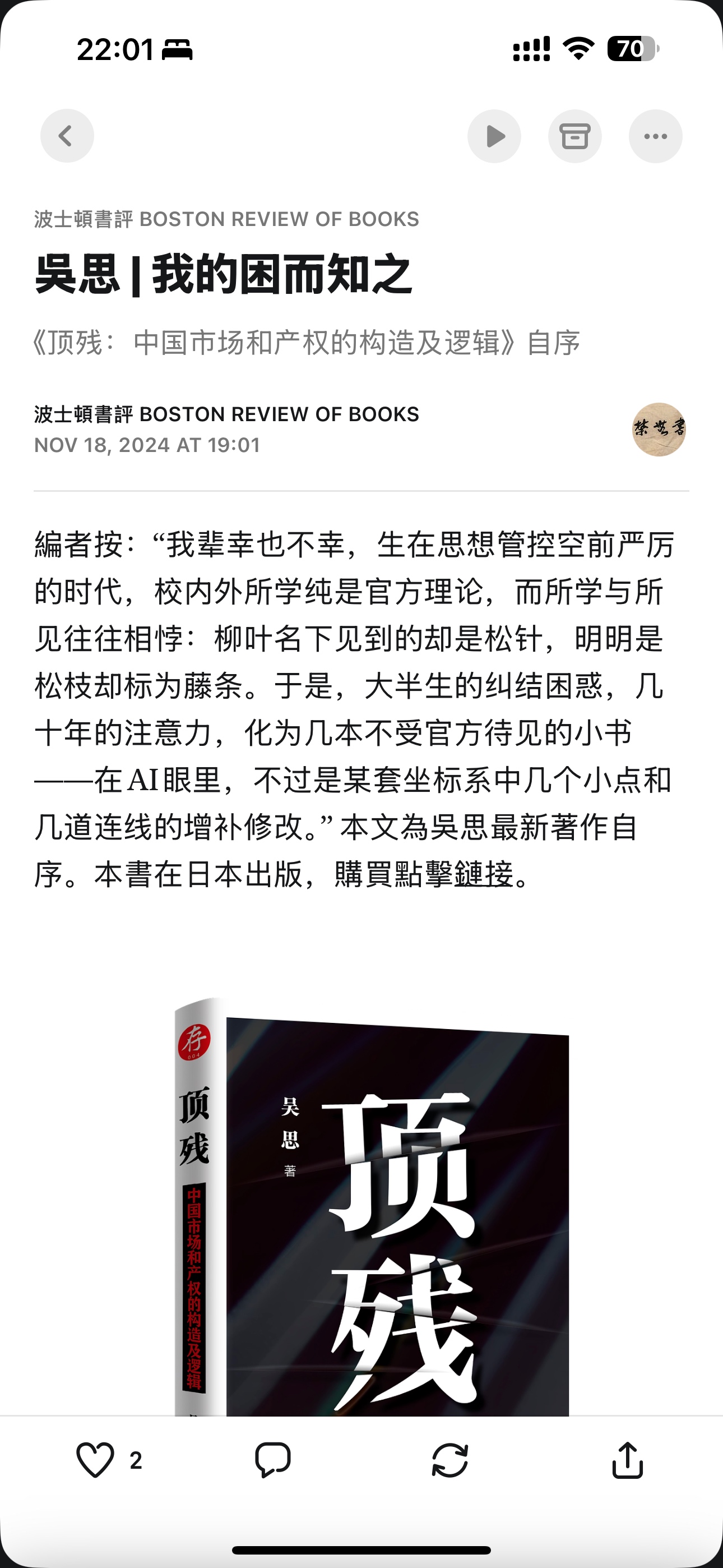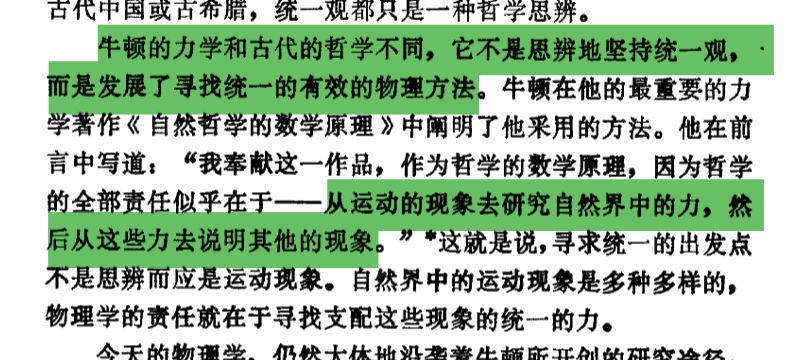下午看阮一峰blog,他引用了《唐纵日记》:
三、对上要善承意旨,不可自作主张,上之所欲者集全力为之,上之所恶者竭力避免,是非曲直不必计及,信任第一,是非其次。
所谓看,不过是感受而已,一句话,公司管理,也是如此。
下午看阮一峰blog,他引用了《唐纵日记》:
三、对上要善承意旨,不可自作主张,上之所欲者集全力为之,上之所恶者竭力避免,是非曲直不必计及,信任第一,是非其次。
所谓看,不过是感受而已,一句话,公司管理,也是如此。
梭罗在《论公民的不服从》里说到:
参观一下海军造船厂,盯着某个水兵,你就知道,这正是美国政府的产物,或者说只有美国政府可以施这妖术把一个人变成这样。我们在这个海军身上看不到一点点人性的影子或记忆。他只是被安排在外面站岗的人,活着。而有人说得好:他其实早就带着陪葬物,埋在武器堆里了,不过也可能是:“没有一声送别的锣鼓,没有讣告,当他的尸体被草草埋进“堡垒”,没有一个士兵为他鸣枪送别,在我们的英雄埋葬的坟前。”大批的人不是作为“人”在为这个国家尽忠,而是作为肉体机器。这就是常备军、民兵、狱卒、警察、临时兵团等。在多数情况下,他们根本无法运用自己的道德感和判断力,他们把自己降格成为木头、泥土或石头。也许可以大批量制造木头人,来达到同样的目的。如此,这些人就像卑微的稻草或是一块肮脏的烂泥,还需要什么尊严呢?他们的价值充其量就是一匹马或是一条狗。然而,正是他们这样的人被普遍认为是良民。其他的那些议员、政客、律师、外交官、高官,用他们的头脑服务国家,却毫无道德观念,可能为魔鬼服务却浑然不知,就好像魔鬼才是他们的上帝。还有另外一小部分人——英雄、爱国者、烈士、广义上的改革家和其他用良知为这个国家服务的人——往往都在抵制这些行径,所以统统被它视为敌人。智慧的人要有所作为,必须首先作为“人”存在,不应被降低成一块“泥巴”,只为“挡住墙上的风洞”。当他脱离世俗、尘归尘土归土时可以说:“我生来高贵,故受不得奴役,我不比任何人低也不受制于任何人,我不是有用的仆人和工具,不为世界上任何一个帝国服务。”有的人把自己的一切全部奉献给了他的同胞,却仿佛被人们认为无用、自私;有的人只奉献了一点点,却被高歌为恩人、慈善家。对待当今的美国政府,我们应该采取什么样的态度才算正直之人呢?我回答:和它有任何关系都使人蒙羞。如果它同时是奴隶们的政府,我怎能承认这个政治机构是我的政府?要我成为这样的政府的臣民,我一秒钟都不愿意。
独立、勇敢的美国人民,是否还记得上面的话吗?
美国独立了249年了,马上250了,从历史各个帝国的寿命来看,不能说寿终正寝,也是达到了一个由盛转衰的关键点了。
Grok给出的分析结论:

Gemmini给出的分析结论:

Chatgpt给出的分析结论:

退房之前
听两个播主
聊加拿大冰球
聊老特鲁多
聊特朗普
还有刘思慕
退房之前
身心俱静

睡前无眠
是的,睡前无眠
没有听够博客
没有带好手表
开动脑筋
写一首无眠的诗
以下引用吴思自述
我到底在折腾什么

本文卖点
智慧城市项目,或者换个说法,政府信息化项目,在项目的启动阶段,往往要进行业务调研。
数字化项目业务调研,与社会学者的社会田野调查,有什么异同?我没有从事田野调查的经验,无法回答这个问题。不过既然都是了解各个委办局工作人员的日常工作,需要他们反馈自己遇到的问题,他们的应对方案,我想,除了目的不同外,在调研过程中获得的信息应该是类似的。
10月16日发生的昆明长丰中学“臭肉”事件,和11月发生的珠海、宜兴无差别群体杀人事件,似乎不值得一提。不过,我最近恰好在云南参与教育信息化项目,这给了我一个绝佳的机会,来了解“臭肉”事件对教育行业的后续影响。
9月1日,本-夏皮罗在自己的博客节目《本-夏皮罗秀》上,采访了著名的“龙虾教授”:乔丹-彼得森。
在2024年9月1日的《The Ben Shapiro Show》中,Jordan Peterson与Ben Shapiro进行了深入的对话,探讨了自我牺牲之美。Peterson是一位世界知名的临床心理学家、多伦多大学的名誉教授,以及在线教育家,以其关于宗教信仰、叙事神话和人格分析的有影响力的讲座而闻名。在他们的对话中,Peterson分享了他在最新系列《Foundations of the West》中的一些幕后轶事,这个系列中他访问了耶路撒冷、雅典和罗马,以揭示西方文明的古老根源。Peterson还讨论了他的个人宗教旅程,以及他对圣经中风险和牺牲主题的观察。
Peterson在对话中提到了亚伯拉罕和以撒的故事,将其作为牺牲主题的一个例子。他解释说,圣经的叙述挑战了儿童献祭的概念,而是将其呈现为父母必须为孩子做出的牺牲的隐喻。愿意让孩子面对世界,尽管存在固有的危险,是一种自我牺牲,最终导致成长和成熟。这一理念与为了社区和后代而必须做出牺牲的更广泛主题相呼应。
此外,Peterson还讨论了社区和责任的角色,他认为社区本质上是建立在牺牲之上的。他主张,人类经历以关系为特点,这些关系要求个人为了更大的利益做出牺牲。这一概念深深植根于圣经文本中,这些文本始终强调无私和愿意为了秩序而面对混乱的重要性。
Peterson还谈到了这种理解对当代社会的含义。他对日益增长的个人主义趋势和对社区责任的忽视表示担忧。他认为,一个将个人利益置于集体福祉之上的社会,最终会破坏自己的稳定性和道德结构。他建议,圣经的叙述为牺牲的重要性和人类生活的相互联系提供了永恒的智慧。
最后,对话以讨论Peterson在加拿大面临的医疗执照挑战作为高潮,他被政府要求接受社交媒体培训。他表达了对抗的决心,将其视为“反对侵犯言论自由和专业完整性”的道德义务。
这些讨论提供了对自我牺牲、社区责任和个人成长的深刻见解,展示了Peterson对这些主题的深入思考。
我特别感兴趣的一点是:Peterson谈到了大模型对于真实世界的理解(从文本上对世界知识进行压缩),和精神分析中的联想方法(如性象征是更深层次真理的替代品),这两者在某种程度上是相同的(认知领域)。
Peterson说:
“通过阅读弗洛伊德,荣格,埃里克·诺伊曼...如果学术界,如果西方高等教育机构能够采纳诺伊曼...荣格的文学解释方法,我们现在就不会处于文化战争之中了。 他们是对的。我认为我们最终会通过大型语言模型揭示这一点,这已经引起了我的注意,精神分析师通过他们的联想工作,自由联想在梦境解释和叙事解释所做的,与大型语言模型在概念之间统计规律的映射中所做的,从认知领域来看是相同的。 所以最好的思考方式,弗洛伊德认为一个象征,如性象征,是更深层次真理的替代品,这是压抑的结果,对吧?所以压抑的内容会以象征的形式出现。这在很多方面几乎是真的,弗洛伊德所说的许多事情几乎是真的。”
上面这段话很有意思,我不由得猜测,这位龙虾教授难不成被吊销了医疗执照后,打算进军llm行业了?
对于Peterson的看法,我是赞同的。今年8月和同事爬昆明西山,顺便参观了山脚下的美术馆,当时美术馆在展出油画和书法,我靠近观看这张“阳光下的草地”,除了斑驳的颜料色块,是不可能“看到”什么草地、阳光、青山、绿水的。这和我们把人脸图像解析为一串向量数字,没有本质不同,但是当你逐渐拉远距离,会发现灿烂的阳光慢慢浮现,仿佛那时那刻画家眼前的景色重现。
油画就是旧时代的大模型。

*播客地址在此:
From The Ben Shapiro Show: How To Find Beauty In Self-Sacrifice | Jordan Peterson, Sep 1, 2024
很多人对健康本身不了解,导致对于金钱与健康的关系有误解。
给你1000万,换你一条腿,你换吗?
给你1000块,换你一个不眠之夜,大部分就从了。

1986年出版的《力学概论》提出,寻求统一的出发点不是思辨而应是运动现象。
我想,之所以方老师这么说,他肯定认为坐而论道是空洞无用的,只有“躬身格物”才是认识世界的唯一正确的道路。
随着llm的出现,我潜意识里,觉得llm也许真是认识这个世界的钥匙,llm是语言的统计学抽象,而语言恰恰是我们认识世界的所有工具的一个表述,当然数学,通过对这个表述的抽象,甚至可以说,是对抽象的进一步抽象,我们可以在更高维度来分析世界面对的真实问题,也许在更高维度里发现的解决方案,也能反过来映射到真实世界中的问题中去。
前几周在昆明西山,参观美术馆里
Neo4J的cto,在火热朝天的大模型背景下,是如何来描绘知识图谱价值的呢?
因为不管fine tune还是rag,都不能提供具备一定置信度的正确答案(Vector-based RAG – in the same way as fine-tuning – increases the probability of a correct answer for many kinds of questions. However neither technique provides the certainty of a correct answer.)
把真正的知识(things not strings)与统计的文本技术结合,就能突破天花板。(bring knowledge about things into the mix of statistically-based text techniques)。